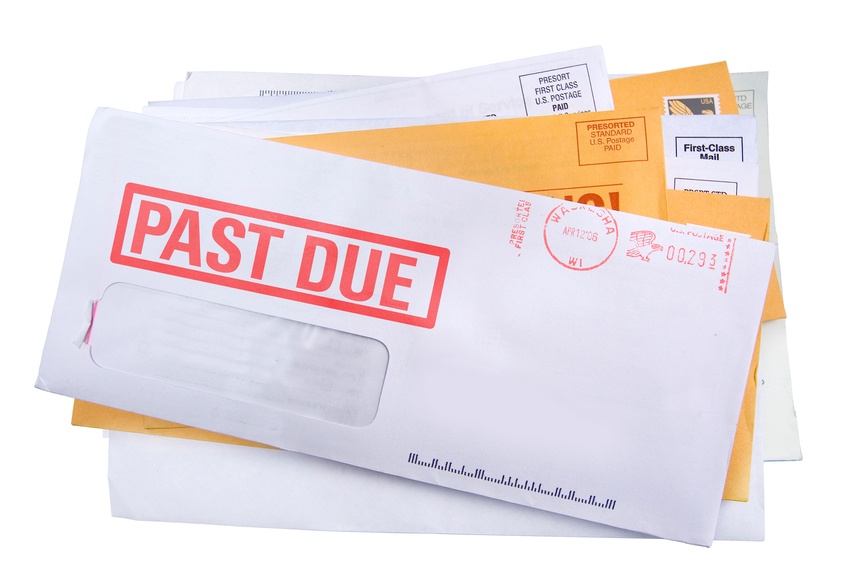Bill collectors always want the money that is owed to them right away, which is understandable.
But if they don’t get it, they will start harassing their debtors with phone calls, letters, expensive fees, and even wage garnishment.
And if none of these tactics work, they will report the non-payment to the credit agencies as delinquency that can stay on your credit report for at least seven years.

So what can you do to prevent all of this from happening?
Well, you can begin by paying your bills on time each month by using the following easy steps:
1. Make a Financial Plan
It is hard to pay your bills on time if you don’t know what needs to be paid or when any of the bills are due. So the first step to changing this is to make a simple financial plan.
Start by gathering up all of your monthly bills. Then, make a simple, handwritten list that shows what the monthly payment amount is, what the total remaining balance will be after the payment, and the date that the bill is due.
2. Get Organized
After you have your financial plan ready, the next step is to get organized. To do this, get a simple expandable file folder that has 12 slots for each month of the year.
In each of the slots, put the statements for the bills that you have. If you don’t have a statement yet, just put a sheet of paper that represents the bill in its place.
Next, attach a stamped envelope to the bills that have to be mailed. If the bill is paid electronically or in person, then write this on a note to paperclip to the statement.
3. Create a Spreadsheet
So that you can be sure that you haven’t missed any payments each month, it helps to have a spreadsheet that you can check on a daily basis.
The spreadsheet should have the same information that is in the original financial plan that you wrote down. Just add your current bank balance at the top of it. That way, it will be very similar to the cash-flow statements that accountants use.
Also, add columns for everything that you need to know about the bills, especially any information regarding how long it takes for the bill collector to process the payments or receive them in the mail.
This is very important because one of the main reasons that bills are late is because people forget that not all payments are processed immediately.
After you are done, print a copy of the spreadsheet to keep with your file folder of bills. Be sure to update it regularly though.
4. Set Reminders
Until checking the spreadsheet each day becomes a pattern, it may be helpful to set up reminders for when each of the bills is due.
There are many free cell-phones and e-mail applications that can be used for this. They work by sounding alarms in set intervals to warn that an event is coming up.
5. Consider Automatic Payments
A multitude of companies offers automatic payments. That means, they automatically withdraw the bill payment amount from your bank account for you.
Many people prefer this option because it helps ensure that their payment is never late.
The only problem with it is that you have to be sure to keep enough money in the bank to cover them. Otherwise, you could end up with overdraft fees.
6. Hire Some Help
Business owners or other people who are struggling to pay their bills on time because of their busy schedule may want to consider hiring someone to handle the task for them.
This option may sound too expensive, but more often than not it actually saves money.
Conclusion
As you can see, paying your bills on time isn’t as hard as you thought.
All you need is a solid financial plan, a good organizational system, a little financial help sometimes, and some easy reminder and payment methods to ensure that you don’t forget when to pay things.
Using these methods regularly is very important because it saves money on fees, ensures bill collectors don’t hassle you, and it keeps your credit score high.
Hopefully, you loved reading this article as much as we loved writing it.
So feel free to share it with any of your friends who you think could benefit from this helpful advice, and add any positive comments that you have about it below.